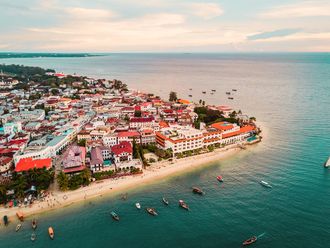Dubai: As regular motorists coming across different speed limits, most of us wonder why a particular road has a certain speed limit and how the authorities might have decided on having a certain maximum speed for a road.
Here, we bring you the science behind the speed limits and road designs.
How speed limits are set
1. “Speed limits are set by using a number of different factors and criteria such as the type of road, geometric design and in some cases existing vehicle speeds (percentiles such as mean or 85th). They are not randomly selected or determined by the number of lanes alone,” said Phil Clarke, principal consultant (road safety and incident management) at Traffic Research Laboratory.
2. “Various factors are considered to set the speed limits on the roads. The design of roads is done based on the road hierarchy developed during the planning stage. However, the actual posted speed is set lower than the design speed to ensure safe flow of traffic. The other practice to decide the posted speed of the existing road is using the method of the 85th percentile speed. A speed study survey is undertaken for the road where a new speed limit has to be posted. Based on the surveys, 85th percentile speed is estimated — this is the speed where 85 per cent of the vehicles drive,” said Nadeem Shakir, technical director, transport planning at Aurecon, an engineers consulting firm. Speeds are established using international best practices but adapted to local conditions.
Key factors involved in setting speed limits
Design classification of the road (expressway, arterial, collector or local)
Number of lanes on the road
Historical traffic volumes on the road
Cross roads and intersection spacing
Intersection controls (signal, roundabout etc)
Accessibility requirements
Geographical location (urban or suburban, CBD or non CBD)
Community typology (residential, industrial etc)
Accident Data
Type of road surface pavement
Pedestrian activities
Cyclist movements
Frontage and spacing from the on-street activities
Public Realm and Landscape requirements
How roads are designed
According to international best practices, prior to the design of a new road, the role that road will play in the road network and the desired speed of traffic on the road are established. The road is then designed to an appropriate design speed for the intended speed limit.
“The preliminary speed limit for the new roads is decided at the planning stage when the road network hierarchy is developed for a new master plan. The balance between mobility and accessibility is maintained to create the road hierarchy. Higher speed roads provide more capacity required for citywide mobility while lower speed roads are used for the safer accessibility within the communities,” said Shakir.
The first step involved during the planning process, according to Shakir, is to estimate the travel demand generated by any development using the trip generation rates.
“This demand is catered with the supply of multi-level hierarchical road network. The capacity for each road varies with the speed. A 120 kmph road can offer a capacity of up to 2,000 vehicles per lane, a 60-80 kmph arterial can offer a capacity of 1,200-1,500 vehicles per lane, while a 20-30 kmph local road can offer a capacity of about 550 vehicles per lane,” he added.








